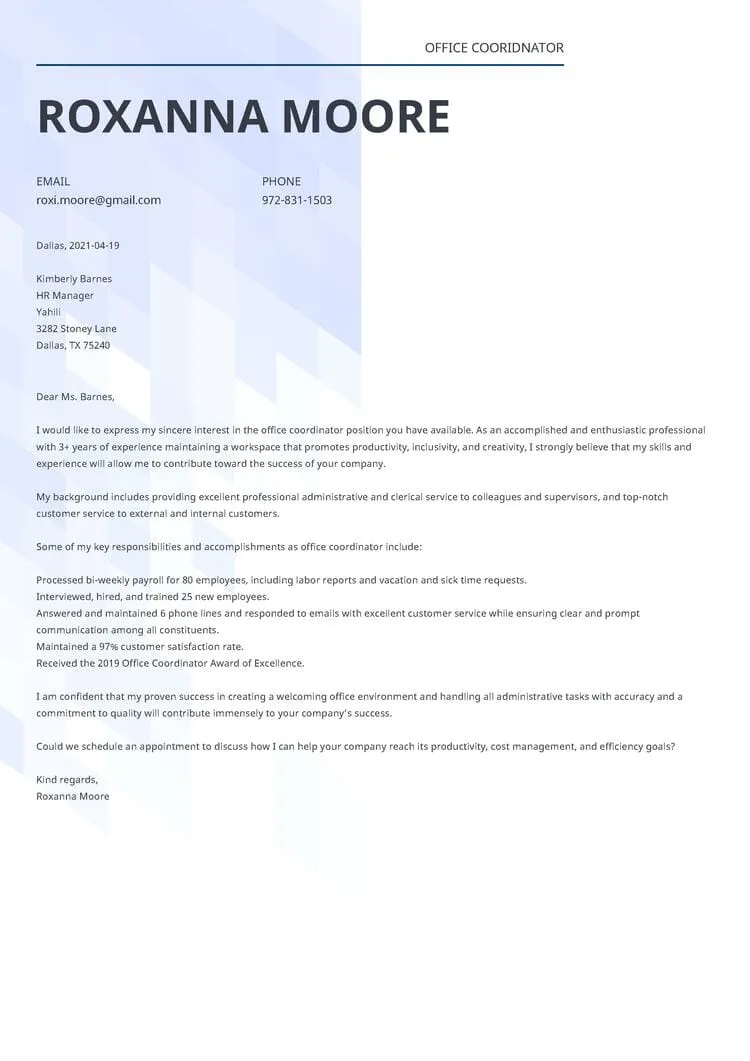What is a Cover Letter
A cover letter is a formal document that you send to a potential employer along with your resume. It serves as an introduction, a summary of your skills and experience, and an opportunity to express your interest in a specific job. It is your chance to make a great first impression and convince the hiring manager that you are the right fit for the role. In many cases, a well-written cover letter can be the deciding factor in whether or not you get an interview, as it offers a space to showcase your personality and enthusiasm, which a resume alone often cannot achieve. A strong cover letter goes beyond simply restating your resume; it tells a story, highlighting why you’re uniquely suited for this particular opportunity.
Why Cover Letters Matter
In a competitive job market, a cover letter provides you with a significant advantage. It allows you to personalize your application, demonstrating that you’ve taken the time to understand the company and the specific requirements of the job. The cover letter is a critical tool for making a connection with the hiring manager, showing them that you’re not just another applicant submitting a generic resume. Moreover, it gives you the flexibility to address any gaps in your employment history or explain career changes. A well-crafted cover letter can showcase your personality, enthusiasm, and writing skills, setting you apart from other candidates who might only submit a resume.
Key Components of a Cover Letter
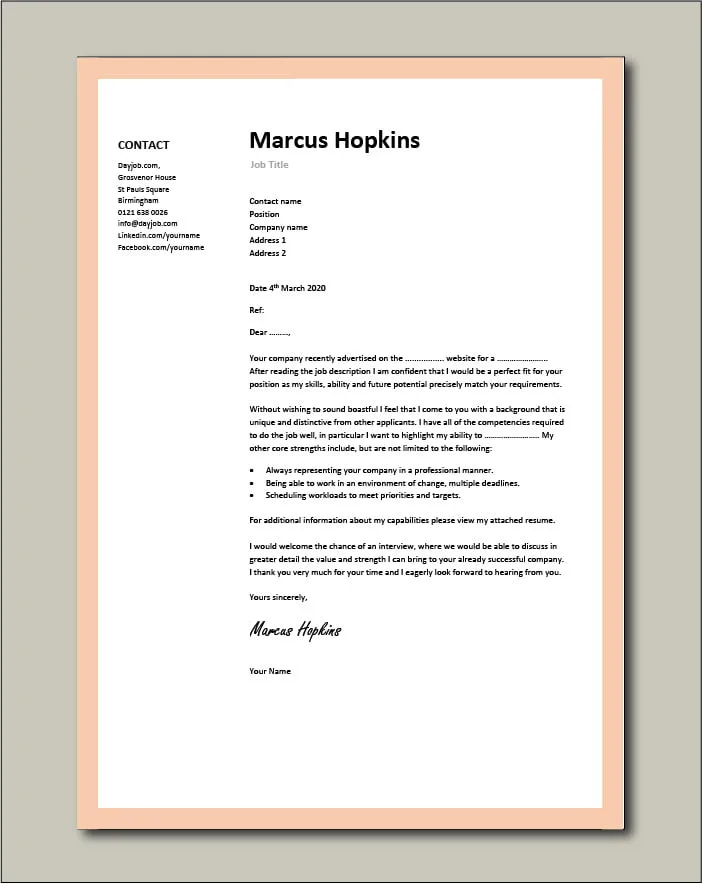
A great cover letter consists of several key components, each playing a vital role in conveying your qualifications and enthusiasm. These include a properly formatted heading, a compelling opening, well-structured body paragraphs that highlight relevant skills, and a strong closing that calls for action. Each section needs to be carefully crafted to ensure that your letter is both informative and engaging, making it easy for the hiring manager to see why you are the ideal candidate. Accuracy, professionalism, and a clear presentation of your strengths are crucial for achieving success.
Heading of Your Cover Letter
The heading of your cover letter sets the tone for the entire document. It includes your contact information, the date, and the recipient’s information. This section is essential for ensuring the hiring manager can easily reach you and for demonstrating your attention to detail. Precision in this area shows you understand professional norms and that you are serious about the role.
Contact Information
Begin with your full name, followed by your phone number, email address, and optionally, your LinkedIn profile URL. Ensure that the contact information is accurate and up to date. Use a professional-sounding email address, and double-check the phone number for errors. This makes it easy for the hiring manager to contact you immediately.
Date
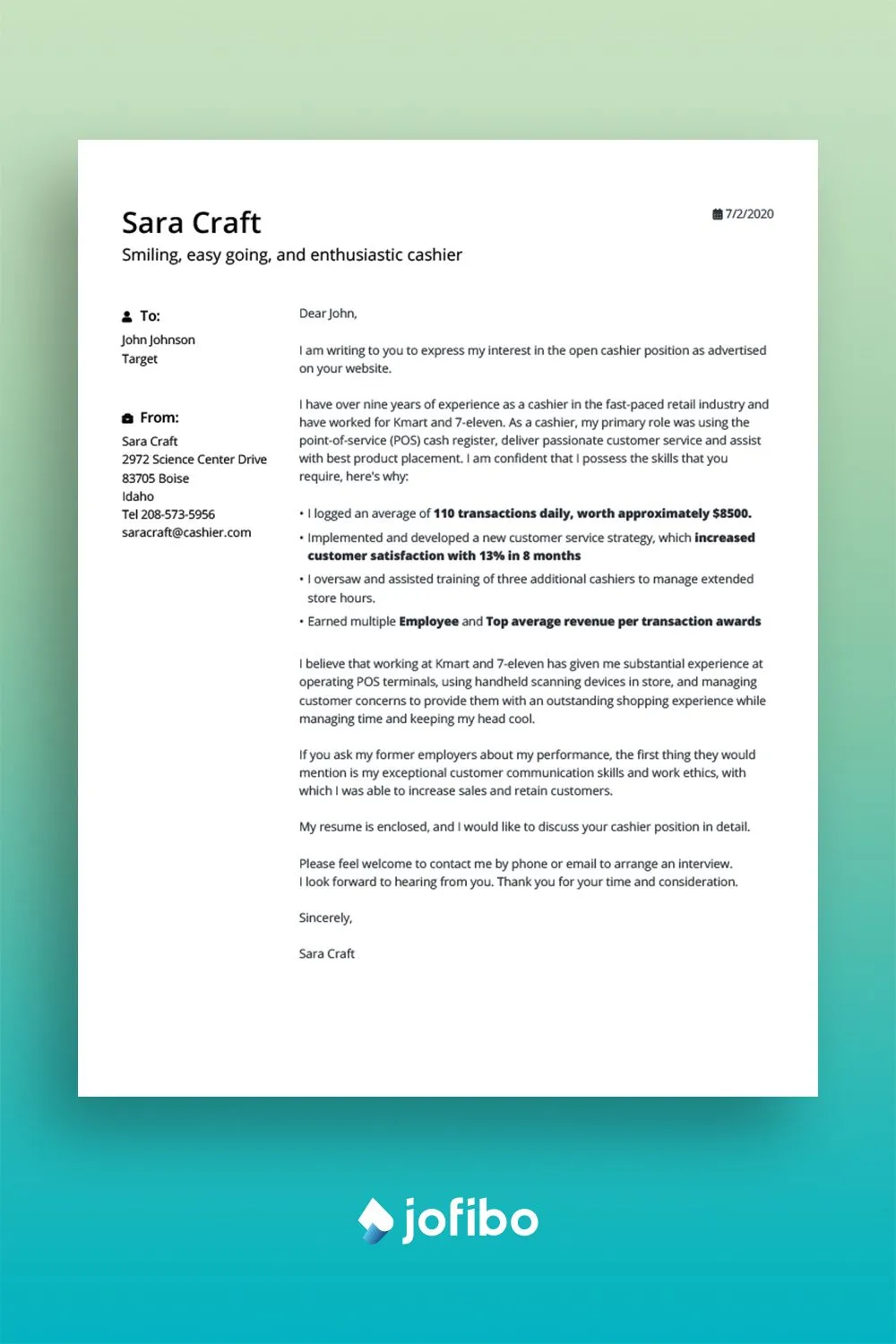
Below your contact information, include the date you are submitting the cover letter. This establishes when you applied for the position and provides a reference point. Use a standard format (e.g., Month Day, Year) to maintain professionalism.
Recipient Information
Address the letter to the hiring manager. If possible, find out the name of the person. If you cannot find a name, use a formal title, such as ‘Hiring Manager’ or ‘Recruiting Team.’ Include their title, the company name, and the company’s address. This personal touch demonstrates initiative and attention to detail.
Opening Paragraph
The opening paragraph of your cover letter must grab the reader’s attention from the start. State the specific position you are applying for and where you saw the job posting. Briefly mention your enthusiasm for the opportunity and why you believe you are a good fit. This opening sets the stage for the rest of your letter and encourages the reader to continue. It should be concise and immediately relevant.
Addressing the Hiring Manager
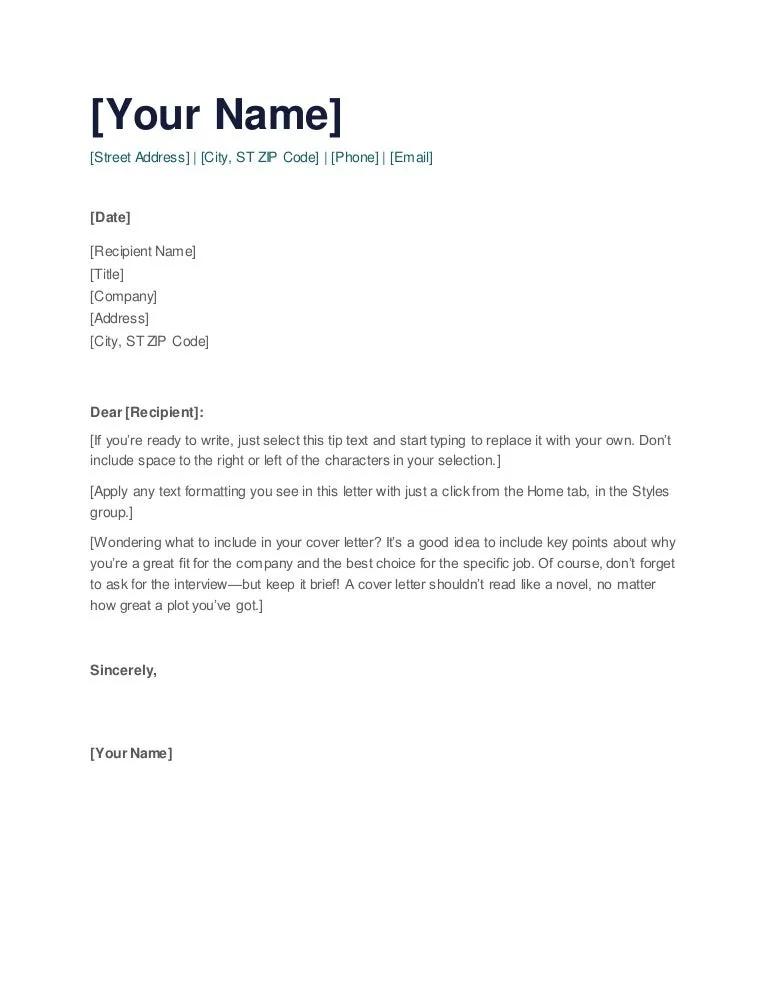
Addressing the hiring manager by name is a powerful way to create a personal connection. Research the company to identify the hiring manager. If you can’t find a name, use a professional salutation, such as ‘Dear Hiring Manager.’ This shows you care enough to personalize the letter, setting a positive tone from the start.
Grabbing Attention
Your opening paragraph must immediately capture the hiring manager’s interest. Start with a compelling statement that showcases your key skills, a brief story, or your passion for the industry. This immediate engagement ensures that the reader wants to read more about you. The attention-grabbing introduction is essential for getting your application noticed.
Body Paragraphs
The body paragraphs of your cover letter should highlight your relevant skills, experience, and accomplishments. Focus on how your qualifications match the job description. Provide specific examples that illustrate your capabilities and achievements. Tailor each paragraph to the specific requirements of the role, demonstrating a clear understanding of what the employer is looking for.
Highlighting Relevant Skills and Experience
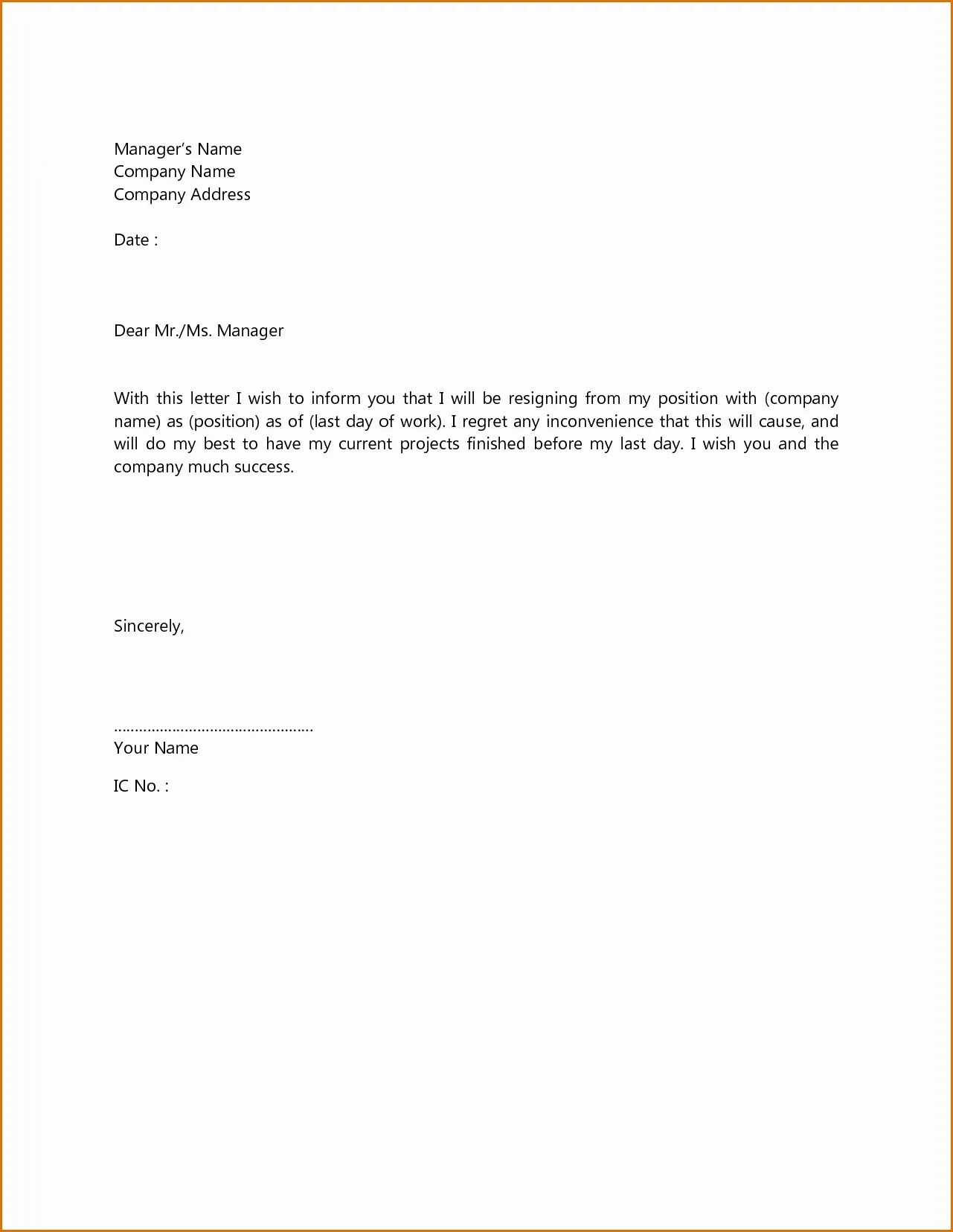
Carefully review the job description and identify the key skills and experiences the employer is seeking. In your body paragraphs, highlight your skills and provide specific examples that demonstrate your proficiency. Use action verbs to describe your accomplishments. Quantify your achievements whenever possible to show the impact of your work.
Tailoring to the Job Description
Customize your cover letter for each job application by addressing the specific requirements outlined in the job description. Show how your skills and experience align with the employer’s needs. This personalization demonstrates your interest and attention to detail, increasing your chances of getting an interview. Always refer back to the job ad when crafting your letter.
Quantifying Achievements
Whenever possible, quantify your achievements to make your accomplishments more impactful. Use numbers, percentages, or statistics to illustrate your success. This demonstrates the value you bring to a company and helps the hiring manager understand your potential contributions. For example, instead of saying ‘Improved sales,’ say ‘Increased sales by 15% in one quarter.’
Closing Paragraph
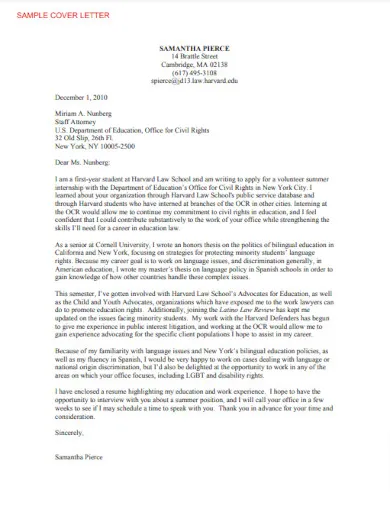
The closing paragraph should reiterate your enthusiasm for the position and express your interest in an interview. Thank the hiring manager for their time and consideration. Make a clear call to action, such as stating that you are available for an interview at their earliest convenience. This leaves a lasting impression and encourages them to contact you.
Expressing Enthusiasm
Restate your interest and excitement in the position. Briefly explain why the role aligns with your career goals and what you hope to achieve at the company. Showing genuine enthusiasm makes you a more memorable candidate.
Call to Action
End with a clear call to action, such as inviting the hiring manager to contact you for an interview. Provide your contact information and express your availability. A strong call to action encourages the hiring manager to take the next step in the hiring process.
Formatting and Proofreading
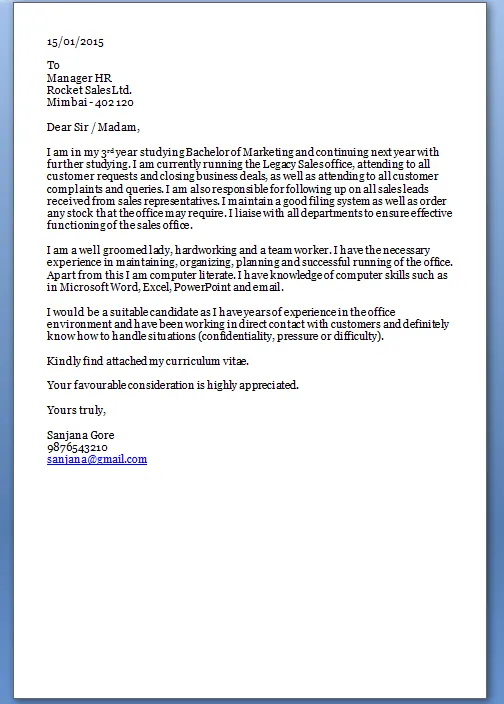
The appearance and accuracy of your cover letter are just as crucial as the content. Pay attention to formatting, including the font, layout, and overall presentation. Proofread meticulously to eliminate any grammatical errors or typos. These details reflect professionalism and attention to detail.
Font and Layout
Use a professional and easy-to-read font, such as Times New Roman, Arial, or Calibri. Maintain a consistent font size (typically 11 or 12 points) and ensure the layout is clean and well-organized. Use single-spacing for the body paragraphs and double-space between paragraphs. Proper formatting makes your cover letter easy to read and visually appealing.
Grammar and Spelling
Carefully proofread your cover letter for any grammatical errors or spelling mistakes. These errors can undermine your credibility. Use a grammar checker and spell-check tool, but also read your letter aloud to catch any mistakes. Precise writing demonstrates your attention to detail.
Proofreading Tips
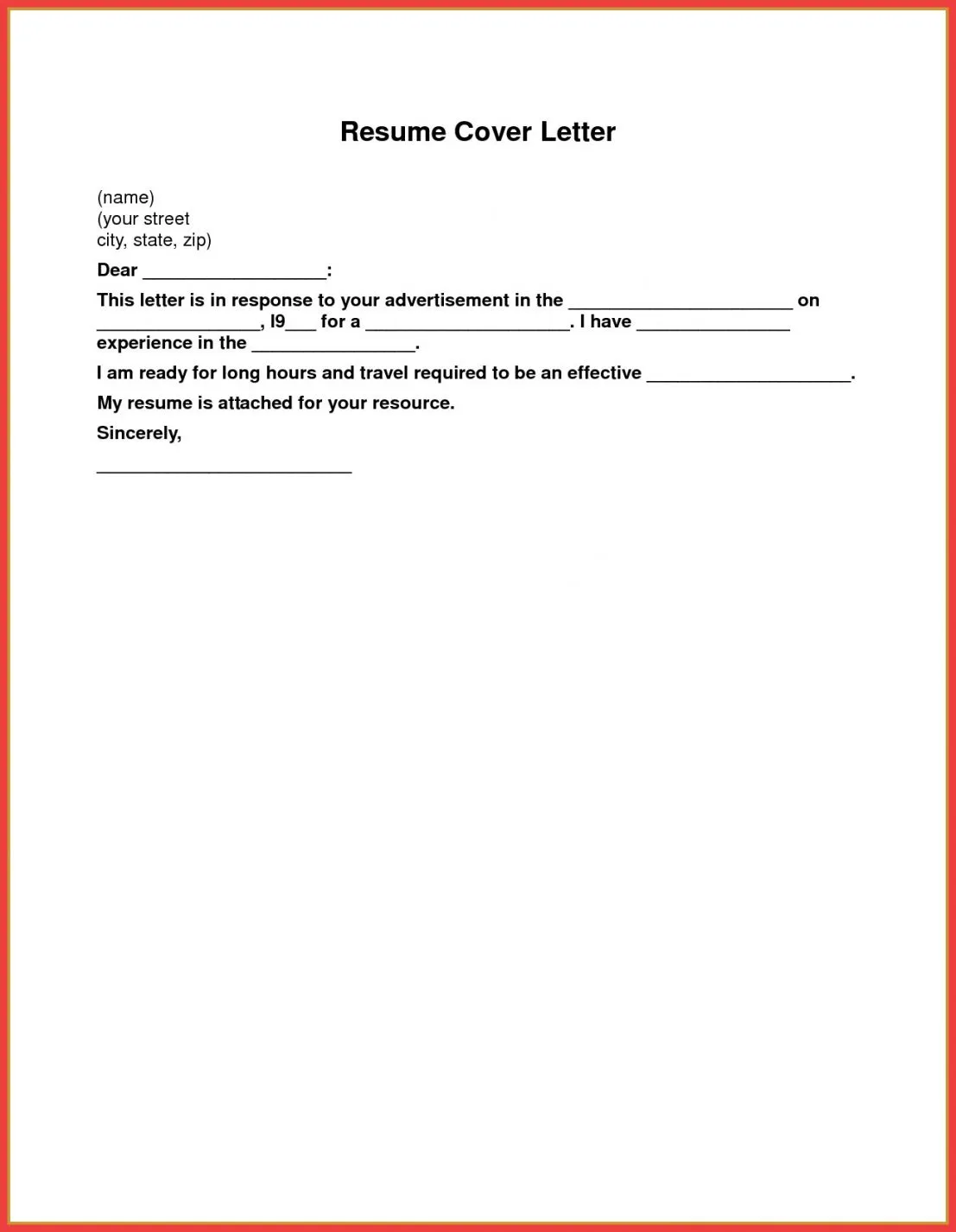
Proofread your cover letter multiple times. Set it aside for a few hours and then review it with fresh eyes. Ask a friend or family member to proofread it as well, as they may catch errors you missed. Check for consistency in formatting and the correct use of pronouns and tense. Thorough proofreading is essential for a professional cover letter.
Example of a Simple Cover Letter
Here is a basic example of a cover letter. Remember to tailor this to each job.
Your Name Your Address Your Phone Number Your Email Address
Date
Hiring Manager Name Title Company Name Company Address
Dear Hiring Manager,
I am writing to express my interest in the [Job Title] position at [Company Name], as advertised on [Platform]. With my [Number] years of experience in [Industry], I am confident that I possess the skills and experience necessary to contribute to your team.
In my previous role at [Previous Company], I was responsible for [Key responsibilities]. I successfully [Achievements], which resulted in [Positive outcomes]. I am eager to bring my skills in [Specific skills] to [Company Name].
I am particularly drawn to [Company Name] because of [Reason]. I am excited about the opportunity to [Specific goals].
Thank you for your time and consideration. I have attached my resume for your review and welcome the opportunity to discuss my qualifications further.
Sincerely, [Your Name]
